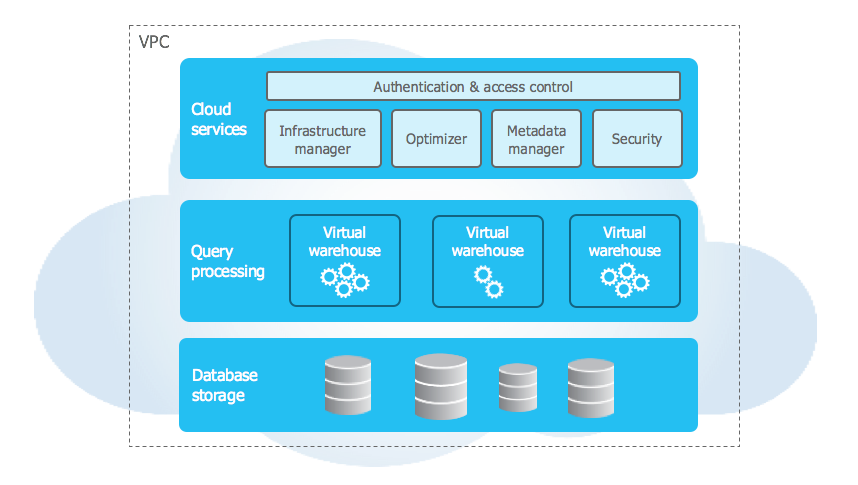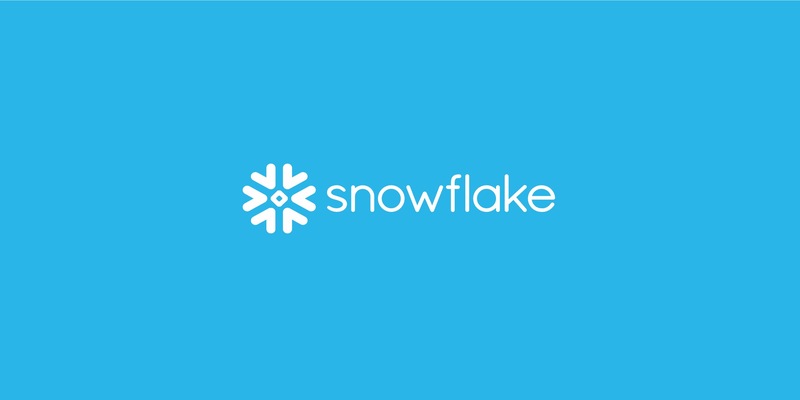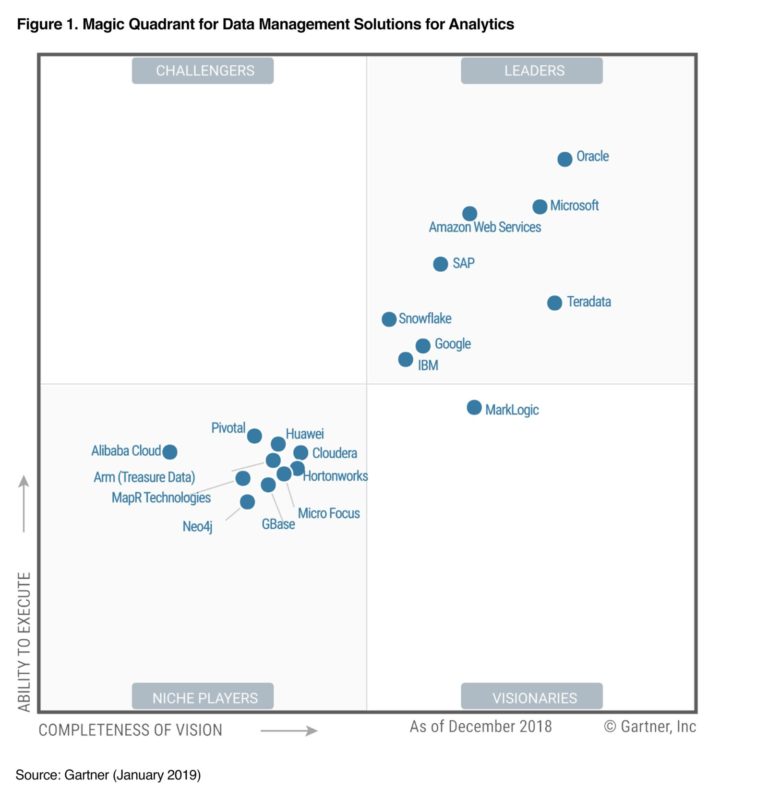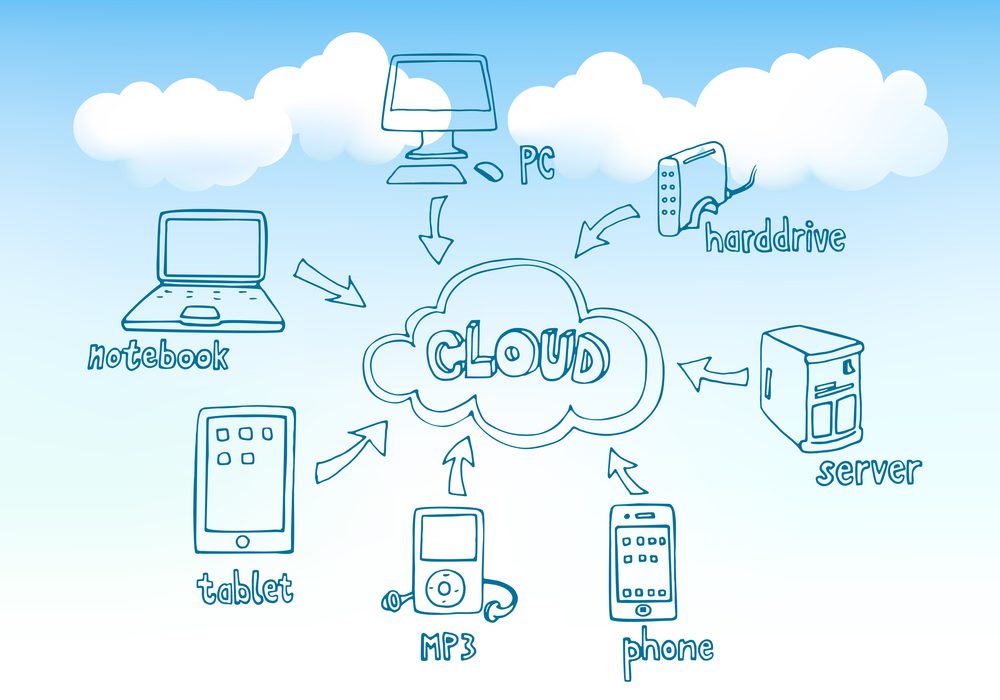Snowflake is a cloud-hosted, fully managed, data warehousing company founded by Benoit Dageville, Thierry Cruanes, and Marcin Zukowski in 2012. Snowflake, a data warehouse-as-a-service provider, offers multiple editions of cloud data warehouse, charging clients on a per second basis.
The San Mateo, California, U.S based company tripled the number of customers in 2018, representing year-over-year revenue growth of 247%.
Snowflake’s data warehouse is not built on an existing database or “big data” software platform such as Hadoop. The Snowflake data warehouse uses a new SQL database engine with a unique architecture designed for the cloud. To the user, Snowflake has many similarities to other enterprise data warehouses, but also has additional functionality and unique capabilities.
– Snowflake
According to Snowflake, the company’s data warehouse is a true Software-as-a-service offering because there is no underlying hardware and software that the client needs to manage, and all the maintenance, management and database tuning is done by Snowflake.
Snowflake: How does it work?
Snowflake stores data in three formats; internal optimized, compressed, columnar format. Snowflake handles all aspects of data storage taking care of organization, file size, structure, compression, metadata, statistics, and other aspects of data storage.
Clients cannot directly access data objects stored in the data warehouse as the only way to access them will be through running SQL query operations. SnowSQL is the command line client used to execute SQL queries, including loading and unloading data from the database.
Snowflake launched a service called Snowpipe to enable continuous data ingestion. It provides customers an automated, and cost-effective way to load data without any manual intervention.

Snowflake supports a wide range of Virtual Warehouse sizes: X-Small, Small, Medium, Large, X-Large, 2X-Large, and 3X-Large. The size of the Virtual Warehouse determines how fast queries will run.

Snowflake Availability
Built on top of AWS (Amazon Web Services) and Azure Cloud Platforms, Snowflake data warehouse is available in the United States, European Union (Frankfurt and Dublin), and Australia (Sydney).
List of Regions:
| 1 | AWS US West |
| 2 | AWS US East |
| 3 | AWS EU (Dublin) |
| 4 | AWS EU (Frankfurt) |
| 5 | AWS Asia Pacific (Sydney) |
| 6 | Azure East US 2 |
| 7 | Azure West Europe |
Organizations can choose any one of the listed seven regions to store their data. Though the features and services are identical across all regions, monthly charges differ between regions.
Snowflake Pricing
Similar to other SAAS (Software-as-a-Service) providers, Snowflake offers usage-based pricing with no long-term commitments Snowflake’s architecture divides its products into three different categories: Compute (Virtual Warehouses), Storage, and Services.
Pricing depends on the usage of Virtual warehouses and Storage, and the service you select.
Storage Pricing
Storage cost is calculated using the average storage used per month after compression. On Demand Storage, where customers pay for month to month usage costs $40 per month. Capacity Storage, where customers pre-purchase capacity requires an upfront payment of $23 per month.
What is a Virtual Warehouse and How do you pay for it?
“A Virtual Warehouse is one or more compute clusters that enables customers to load data and perform queries. Customers pay for Virtual Warehouses using Snowflake Credits.”
Snowflake Credits are used to pay for the processing time of a Virtual Warehouse. Snowflake Credits, a unit of measure, are consumed only when a Virtual Warehouse is running. When a warehouse is not running (ie. it is set to Sleep mode), it does not consume any Snowflake Credits. Snowflake Credits are consumed at different rates based on the size of the running warehouse.- Snowflake
Service:
Snowflake offers five different service types: Standard, Premier, Enterprise, Enterprise for Sensitive Data and Virtual Private Snowflake. There are two ways to pay for Snowflake Service: On-Demand and Pre-Purchased Capacity.
In the On-Demand purchase model, customers are charged a fixed rate every month. There is a $25 minimum monthly charge, and a fixed rate per TB charge per month for storage. Pricing differs by region.
On-Demand Pricing: Price per Snowflake Credit
| Type of Service | US | Frankfurt | Dublin | Amsterdam | Sydney |
| Standard | $2.00 | $2.70 | $2.50 | $2.50 | $2.75 |
| Standard with Premier Support | $2.25 | $3.00 | $2.80 | $2.80 | $3.05 |
| Enterprise | $3.00 | $4.00 | $3.70 | $3.70 | $4.05 |
| Enterprise with ESD | $4.00 | $5.40 | $5.00 | $5.00 | $5.50 |
On-Demand Storage Pricing by Region
| Storage | US | Frankfurt | Dublin | Amsterdam | Sydney |
| Price Per TB | $40 | $45 | $40 | $40 | $46 |
Pre-Purchased Capacity:
Capacity Purchase is a specific dollar commitment. Customers get a notification after crossing 70% of their Capacity balance. If the purchased capacity is exceeded, customers will be charged using the corresponding on-demand pricing.
| Capacity Storage | US | Frankfurt | Dublin | Amsterdam | Sydney |
| Price Per TB | $23.00 | $24.50 | $23.00 | $23.00 | $25.00 |
Awards and Recognition:
In January 2019, research firm Gartner named Snowflake as one of the leaders in Data Management Solutions for Analytics after evaluating 19 vendors on 15 criteria.
In the report, which can be downloaded here, Gartner praised Snowflake’s customer experience, elasticity, and operational efficiency, while identifying the lack of certain features, fast growth and training resources, and support as areas of caution. Gartner named Snowflake a challenger in its 2018 report.




